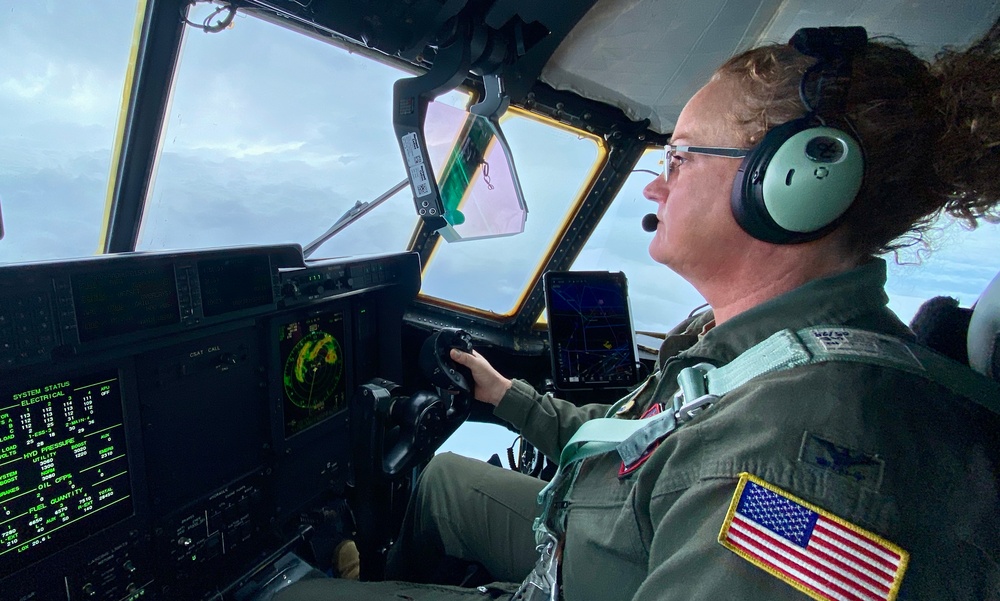DVIDS – News – Pioneering the Arctic Frontier for ICEX 2018
ARCTIC CIRCLE (NNS) — A team consisting of members of the Undersea Warfighting Development Center Arctic Submarine Laboratory (UWDC ASL), the University of Alaska Fairbanks and Ukpeaġvik Iñupiat Corporation (UIC) Science conducted pioneering surveys to analyze and collect data on ice floes across the Beaufort Sea in preparation for the Ice Exercise (ICEX) 2018 Ice Camp Skate, 26-28 Feb.
During the pioneering flights, the team flew on a De Havilland DHC 3T Turbine Otter airplane more than 1,000 miles and surveyed seven ice floes. The single-engine Otter was modified with skis enabling it to take off and land safely on ungroomed ice and snow.
While on each ice floe, the team drilled and collected ice cores to determine the type of ice. Additionally, a specialized sled carrying an Electromagnetic Induction (EMI) instrument was pulled across the ice to determine the varying thickness by distinguishing between the different properties of sea-ice.
“A member of the team treks across the sea ice dragging the sled for miles in far below freezing conditions to obtain the data,” said Andy Mahoney, University of Alaska Fairbanks Research Associate Processor. “The data and cores are then analyzed and mapped to determine possible locations which can support an ice camp and a groomed runway to land aircraft.”
Combined, the team has decades of experience tracking and studying the ice floes throughout the region providing a better understanding of the formation and deformation, melting and movement of the ice floes passing through the Beaufort Sea.
According to the National Oceanic and Atmospheric Administration (NOAA), during summer months, Arctic sea-ice covers between two and five million square kilometers and 12 and 14 million square kilometers in the winter.
“We started back in October tracking satellite data to identify ice floes which we could identify from one image to the next to track the growth for this year’s pioneering flights and ice selection,” said Andy Mahoney, University of Alaska Fairbanks Research Associate Processor. “This has been a culmination of months of satellite analysis based on years of experience analyzing this type of data and field experience being on the ice.”
“For an ice camp, the team needed to identify a floe consisting of both first-year and multiyear ice within flight range of our support aircraft to continue delivering supplies and personnel,” said Larry Estrada, Arctic Submarine Laboratory Director. “First-year ice is characteristically flat providing an ideal location for grooming a runway, whereas multiyear ice, or ice which survives the summer months to form first-year ice around the remaining floe which produces a stronger, thicker and more stable floe ideal for supporting ice camp structures.”
ICEX 2018 is a biennial submarine exercise that allows the U.S. Navy to assess its operational readiness in the Arctic, increase experience in the region, advance understanding of the Arctic environment, and continue to develop relationships with other services, allies and partner organizations.
For more information about ICEX 2018, visit www.dvidshub.net/feature/ICEX2018 or www.facebook.com/arcticsublab.
| Date Taken: | 03.08.2018 |
| Date Posted: | 03.08.2018 11:07 |
| Story ID: | 268585 |
| Location: | ARCTIC CIRCLE, AK, US |
| Web Views: | 411 |
| Downloads: | 0 |
PUBLIC DOMAIN
This work, Pioneering the Arctic Frontier for ICEX 2018, must comply with the restrictions shown on https://www.dvidshub.net/about/copyright.

 Private Internet Access gives you unparalleled access to thousands
of next-gen servers in over 83 countries and each US state. Your
VPN experience will always be fast, smooth, and reliable.
Private Internet Access gives you unparalleled access to thousands
of next-gen servers in over 83 countries and each US state. Your
VPN experience will always be fast, smooth, and reliable.
